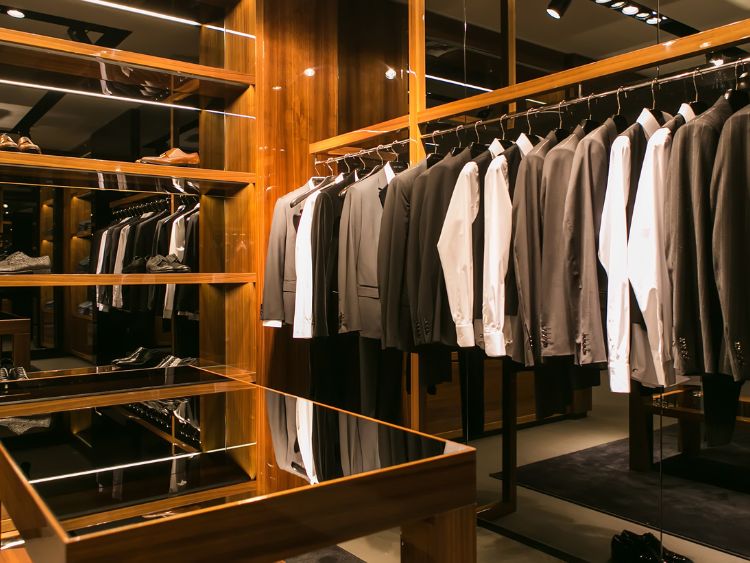The 1950s was a transformative decade for fashion, marked by post-war prosperity, innovation, and a sense of newfound freedom. People were ready to leave behind the austerity of the 1940s and embrace a more glamorous and carefree way of life. This shift was reflected in their clothing, where fashion became a statement of individuality, femininity, and elegance.
The Evolution of 1950s Fashion
Fashion in the 1950s saw a return to tailored silhouettes, bright colors, and intricate patterns. With designers like Christian Dior leading the charge, women’s fashion moved away from the utilitarian looks of the war era to more refined and figure-flattering styles. Let’s explore some of the most iconic trends and garments that defined 1950s fashion.
The New Look
The decade kicked off with Christian Dior’s “New Look”, which debuted in 1947 but continued to shape the fashion world well into the 1950s. The “New Look” emphasized a small waist, a full skirt, and an hourglass figure—a sharp contrast to the boxy, fabric-conserving styles of the 1940s. Dior’s designs celebrated curves and femininity, making it the gold standard for high fashion in the early ‘50s.
- Nipped-in waists: Women wore corsets or girdles to achieve that desired hourglass shape.
- Full skirts: These skirts were often calf-length and accompanied by petticoats for extra volume.
- Bold accessories: Gloves, pearls, and hats were essential to complete the look.
The Iconic Pieces of 1950s Fashion
- Poodle Skirts: One of the most iconic and playful items from the decade, poodle skirts were full, circle skirts adorned with appliqués of poodles or other whimsical designs. Often paired with fitted blouses and sweaters, they were popular with teenagers and embodied the fun and carefree spirit of the era.
- Swing Dresses: These dresses had wide, flowing skirts perfect for dancing. Women wore swing dresses to social events, emphasizing movement and grace. Paired with stiletto heels and gloves, the look was both elegant and practical for the modern woman.
- Pencil Skirts: While full skirts dominated casual and semi-formal wear, pencil skirts were the go-to for a more sophisticated, office-ready look. These skirts hugged the hips and thighs, offering a sleek and polished silhouette. Often paired with blouses or blazers, the pencil skirt was a symbol of professionalism.
- Capri Pants: Although skirts and dresses dominated, capri pants provided a practical and stylish option for women, especially in casual settings. Paired with boatneck tops or tucked-in blouses, they were perfect for weekend outings and embodied a more relaxed fashion approach.
- Cardigans and Sweater Sets: Sweaters, particularly cardigan sets, were a staple of 1950s wardrobes. Women paired them with skirts or pants for a cozy yet put-together look. The twin set became a hallmark of preppy style, often worn by college students and young professionals alike.
Men’s Fashion in the 1950s
While women’s fashion often steals the spotlight, men’s fashion in the 1950s was equally iconic. The post-war economy allowed men to invest in well-tailored suits and luxury fabrics.
- Gray Flannel Suits: The epitome of business attire, the gray flannel suit was a staple for professionals. These suits were conservative yet stylish, featuring broad shoulders, slim waists, and narrow trousers.
- Leather Jackets: Popularized by movie stars like James Dean, leather jackets became synonymous with rebellion. Paired with white t-shirts and jeans, this look defined the “bad boy” image.
- Bowling Shirts and Hawaiian Shirts: For casual occasions, men embraced colorful, printed shirts. Bowling shirts and Hawaiian shirts, with their bright patterns and short sleeves, added a relaxed vibe to the male wardrobe.
Fashion Icons of the 1950s
A discussion on 1950s fashion wouldn’t be complete without mentioning some of the decade’s biggest fashion influencers:
- Marilyn Monroe: Perhaps the most iconic figure of the 1950s, Marilyn Monroe’s style was glamorous, sensual, and timeless. Her signature red lips, figure-hugging dresses, and platinum blonde hair made her a global style icon.
- Audrey Hepburn: Known for her elegance and grace, Audrey Hepburn’s style was more minimalist compared to the curvy, bombshell aesthetic of Monroe. Her little black dress from Breakfast at Tiffany’s remains one of the most iconic outfits of all time.
- Grace Kelly: The epitome of royalty and sophistication, Grace Kelly’s wardrobe consisted of tailored suits, full skirts, and chic accessories. She became a fashion icon both on-screen and off after marrying Prince Rainier of Monaco.
1950s Fashion FAQs
What influenced 1950s fashion?
The end of World War II had a significant impact on fashion. The prosperity of the post-war economy allowed people to afford more luxurious fabrics and clothing. Designers like Christian Dior also played a major role with his “New Look,” which became the dominant style in the early 1950s.
What were popular fabrics in the 1950s?
Silk, wool, cotton, and synthetic fabrics like nylon were all popular during this time. The use of polyester also became widespread, offering affordable and durable options for everyday wear.
How did men’s fashion differ from women’s in the 1950s?
While women’s fashion emphasized curves and femininity, men’s fashion was more conservative. Men often wore tailored suits for work and casual trousers or jeans with printed shirts on the weekends. Leather jackets and the “bad boy” look became popular with younger men, thanks to icons like James Dean.
What accessories were popular in the 1950s?
Gloves, hats, pearls, and scarves were essential accessories for women. For men, fedoras, ties, and pocket squares completed their look.
Conclusion: A Decade of Lasting Influence
The influence of 1950s fashion can still be seen in today’s trends. From the hourglass silhouette to the playful poodle skirt, the timeless styles of this era continue to inspire modern designers. The 1950s represented a return to glamour and elegance, with a focus on individuality and sophistication. Whether it’s on the runway or in vintage-inspired streetwear, the fashion of the 1950s remains iconic and relevant in today’s world.
